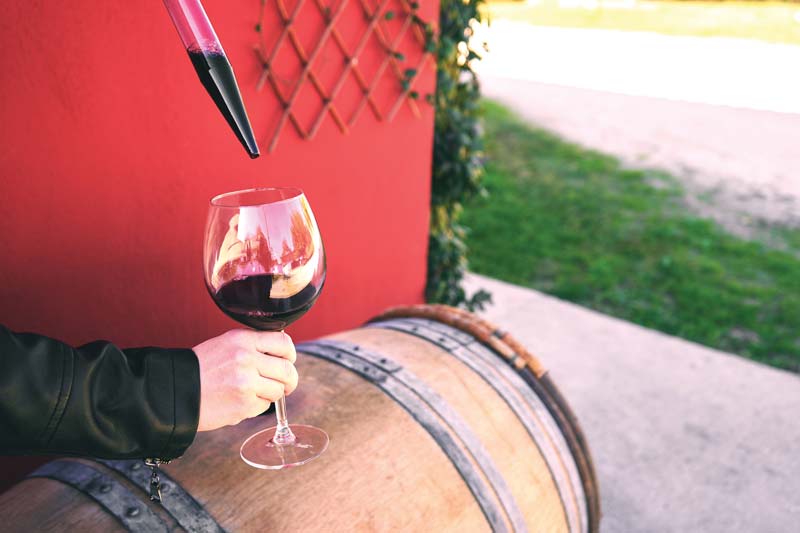
I’ve heard rumor that a couple of smaller wineries that have experienced smoke taint in their grapes are indeed evolving that wine into new styles. Depending on the grape type and level of impact, it’s possible their base wines may have a wide array of “smoke effect” descriptors like: Bacon-y, deli meat, barbecue, toasty, etc., which all can be positives in the right place. As long as a wine isn’t completely objectionable (think old ashtray or cigarette butt), it’s perfectly sensible to me to try to work with what you’ve got.
In some cases, winemakers are layering on a lot of oak, or doing one of these Bourbon-barrel style wines, which lean heavy on the toasty oak and seek to make a feature of the smokiness, rather than perceive it as a flaw. How well are these wines selling and how consumers are perceiving them I couldn’t tell you as I don’t have any insight there; but I do know some folks are getting creative when they are working with grapes and wines with a somewhat smoky character.
In general, smoke taint is a new phenomenon as wildfires have really only been a part of winemaking in the past 5–10 years. The research on the subject is still fairly nascent and there is still so much we don’t know. For what it’s worth, I would like to tell our readers some basic facts about smoke taint in grapes and wines as well as some of my personal observations:
• Smoke-affected grapes and wines are still safe for human consumption.
• Many of the “smoky” compounds that can be signs of smoke exposure in grapes and wine are actually desirable in many wine styles. In fact, many are the exact same chemical components that winemakers purposefully put into wines in the form of toasted oak barrels, chips, beans, etc.
• Smoke-taint research is still in its infancy. Experts still disagree about which markers to use to track evidence of smoke taint, what level of smoke exposure is a risk, and even the definition of what smoke taint is.
• Just because there is smoke in the air doesn’t mean your grapes and wine will exhibit smoke taint in the finished wine.
Anecdotal evidence from my winemaking community includes:
• After about a year of age the wine will express whatever smoky characteristics it’s going to.
• Spending a lot of money to send wine and grape samples into fancy labs like ETS is practically meaningless as the numbers don’t seem to correlate well to actual aroma or flavor intensity of defects in the wine.
For more information about smoke taint in grapes and wine, I recommend visiting the Australian Wine Research Institute’s (AWRI) website.
There’s a lot more that I could write about the topic. But in the meantime, yes, feel free to experiment with some new wine styles if ever you are faced with a smoky vintage!




